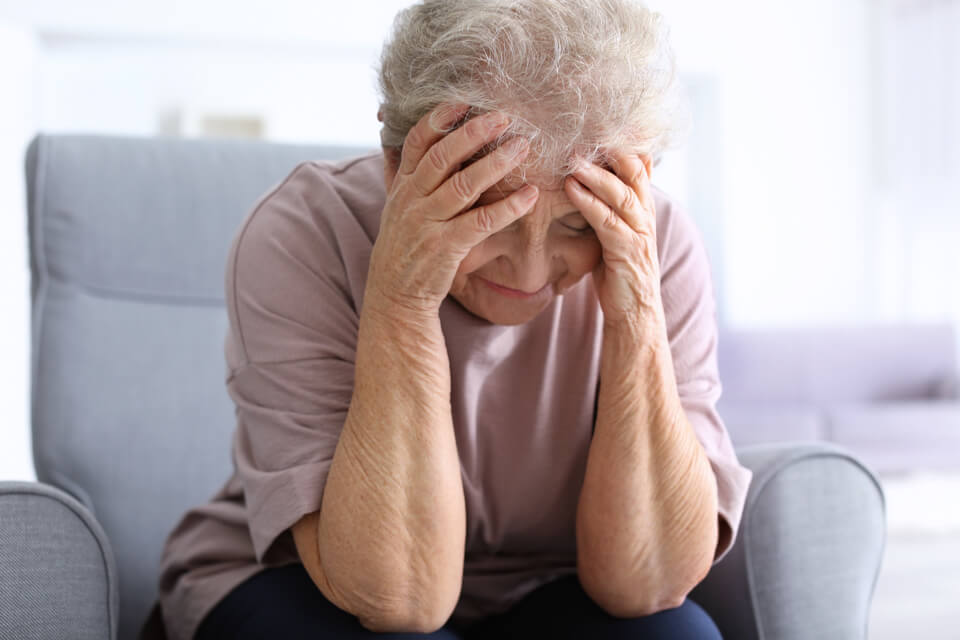Shingles is caused by the varicella-zoster virus — the same virus that causes chickenpox. After a person has had chickenpox, the virus stays in the body for the rest of their life. At any time, the virus may reactivate as shingles.
Shingles cannot be caught from someone who has the condition, but if they haven’t had chickenpox, they can catch chickenpox by coming into direct contact with fluid on the blisters of someone who has shingles.
The reason for shingles developing is unclear but it may be due to lowered immunity to infections as people get older. Shingles is more common in older adults and in people who have weakened immune systems.
Although usually not life-threatening, shingles can be a painful and potentially debilitating condition impacting the quality of life of those affected.
Symptoms
Symptoms of shingles may include pain, burning or tingling of the skin. There may also be a sensitivity to touch and an itching sensation in the affected area.
A red rash begins to develop within a few days of the pain being felt. The rash progresses into fluid-filled blisters that can break open and crust over.
Some people also experience fever, headache sensitivity to light and fatigue.
Shingles rash develops as a stripe of blisters that wraps around either the left or right side of the torso. Sometimes the shingles rash occurs around one eye or on one side of the neck or face.
In many people, shingles gets better without any complications. However, in others, several complications can occur. These include:
- Ongoing pain from post-herpetic neuralgia. This is less common in younger people.
- Shingles occurring in the eye area could result in temporary or permanent vision loss. Shingles in the eye may need a referral to an eye specialist for treatment.
- The shingles rash could become infected and antibiotics may be needed.1
There are several ways in which to help manage the condition. Try to keep the rash dry and clean, and only cover the rash to avoid spreading the virus to others. Scratching the rash may cause infection and scarring of the blisters.
After a bath or shower, gently pat the area dry with a clean towel. Don’t rub or use the towel to scratch the rash, and don’t share towels. Wear loose cotton clothes around the parts of the body affected.
Cool compresses, baths or ice packs may help with the discomfort. Applying creams or gels to blisters is not recommended, because they might increase the risk of a secondary bacterial infection.
Avoid contact with people who may be more at risk, such as pregnant women who are not immune to chickenpox, people who have a weak immune system, and babies less than one-month-old.
Treatment
Beginning treatment with antiviral medicines within three days of the rash appearing should reduce the severity of symptoms and the risk of further complications, including post-herpetic neuralgia.
Early treatment with aciclovir, famciclovir or valciclovir reduces the duration of acute pain, although aciclovir seems less effective than famciclovir or valciclovir.2 Evidence for reducing the risk or duration of post-herpetic neuralgia is conflicting.2
Simple analgesics like paracetamol or non-steroidal anti-inflammatories can be used for mild pain, but other drugs may be necessary if the condition progresses to post-herpetic neuralgia.
Tricyclic anti-depressants, particularly amitriptyline, have the most evidence of efficacy. All appear similarly effective.2 Antiepileptics pregabalin and gabapentin appear to have similar efficacy.2 Opioid analgesics should be used as a last resort, particularly in the elderly.
Prevention is available in the form of vaccines.
Two vaccines are available to reduce the likelihood of developing shingles, Zostavax and Shingrix.
Zostavax provides protection for at least five years, Shingrix for at least seven years. Both are effective in preventing shingles and reducing post-herpetic neuralgia.
Those aged over 50 can talk to their GP about whether they need a vaccination, which is recommended for everyone over 60 and is given free of charge in Australia to people aged 70 to 79.
Conclusion
One in three people will develop shingles in their lifetime. The risk of shingles increases with age. It’s most common in those aged 60 and older. People who are immunocompromised are also at increased risk.3
Be aware of the symptoms and the appearance of a shingles rash, and refer to the GP for diagnosis and treatment. Encourage customers aged over 60 to inquire about the vaccine, and reinforce that the vaccine is free for those aged between 70 and 79.
If a customer has been diagnosed with shingles, counsel them regarding treatment and offer lifestyle tips to reduce the discomfort.
References
- healthdirect.gov.au/shingles
- Australian Medicines Handbook.
- Australian Institute of Health and Welfare. ‘Shingles in Australia’. 13/11/2018 edition.
Written by Sue Holzberger. This feature was originally published in the May issue of Retail Pharmacy magazine.







